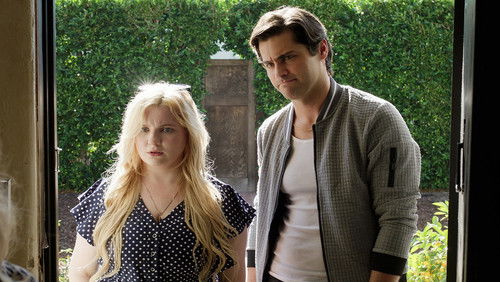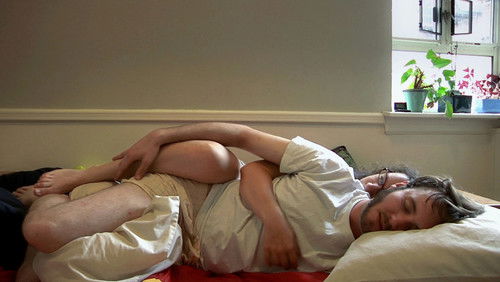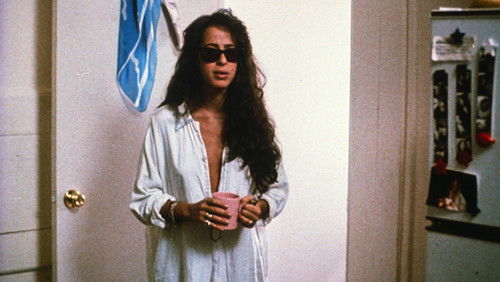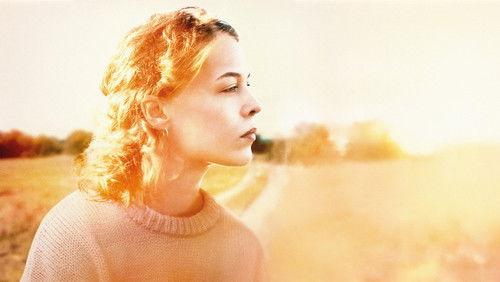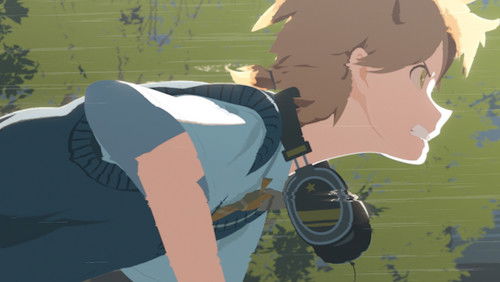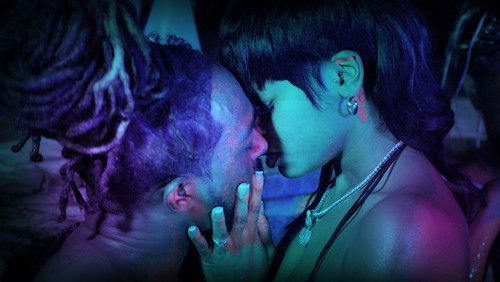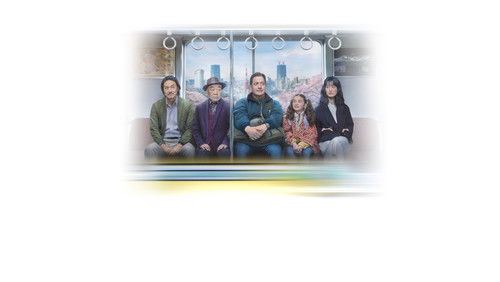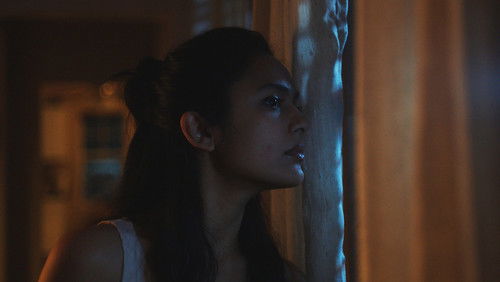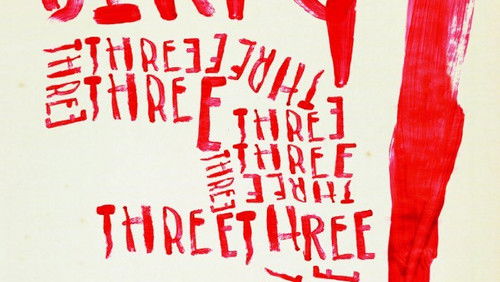Cold War – Der Breitengrad der Liebe (2018)
62KCold War – Der Breitengrad der Liebe: Directed by Pawel Pawlikowski. With Joanna Kulig, Tomasz Kot, Borys Szyc, Agata Kulesza. In the 1950s, a music director falls in love with a singer and tries to persuade her to flee communist Poland for France.
“Reading around some of the reviews of Zimna wojna, I recognise that this should have been a film I liked, loved even, as so much of what these critics are praising are exactly the kinds of things I myself often look for in a film. Itu0026#39;s one of the best reviewed films of the year, and I freely acknowledge thereu0026#39;s a huge amount to praise here, with elements of the visual design borderline genius. However, all the aesthetic brilliance in the world doesnu0026#39;t hide what, for me, is its single greatest flaw – it just left me utterly cold; I didnu0026#39;t care about the two main characters, and I didnu0026#39;t buy their relationship. Yes, Iu0026#39;m aware that emotional detachment is exactly what it was going for, and itu0026#39;s probably unfair to criticise a film for successfully doing what it intended to do, but when it ended, all I could think was u0026quot;meh.u0026quot; Although, to be fair, that may say more about myself than the film.u003cbr/u003eu003cbr/u003eWritten by u003ca class=ipc-md-link ipc-md-link–entity href=/name/nm0667734/\u003ePawel Pawlikowskiu003c/au003e, u003ca class=ipc-md-link ipc-md-link–entity href=/name/nm0323196/\u003eJanusz Glowackiu003c/au003e, and u003ca class=ipc-md-link ipc-md-link–entity href=/name/nm2819873/\u003ePiotr Borkowskiu003c/au003e, and directed by Pawlikowski, who loosely based the story on events in his parentsu0026#39; lives, the plot of Zimna wojna is simplicity itself. The film begins in 1949, two years since a communist government came to power and the country was provisionally renamed Rzeczpospolita ludowa (Polish Peopleu0026#39;s Republic). It opens with composer and pianist Wiktor (u003ca class=ipc-md-link ipc-md-link–entity href=/name/nm1682799/\u003eTomasz Kotu003c/au003e), his ethnomusicologist producer Irena (u003ca class=ipc-md-link ipc-md-link–entity href=/name/nm0474492/\u003eAgata Kuleszau003c/au003e), and rigid state-sponsored overseer Kaczmarek (u003ca class=ipc-md-link ipc-md-link–entity href=/name/nm0844371/\u003eBorys Szycu003c/au003e) travelling through the isolated rural communities of the Polish countryside, recording folk songs and attempting to find recruits for a folk music school, with the aim of putting together an ensemble to perform nationally, and hopefully, internationally. Wiktor is bored out of his mind with the repetitive nature of the work, until a young woman named Zula (an extraordinary u003ca class=ipc-md-link ipc-md-link–entity href=/name/nm2251846/\u003eJoanna Kuligu003c/au003e) comes to the school to audition. Although she doesnu0026#39;t fit the profile of what they are looking for – sheu0026#39;s from the city rather than the countryside, is rumoured to have spent time in prison for killing her father, and performs not a folk song at her audition, but a piece from a Soviet film – and although Irena points out there are better singers, Wiktor argues that she has u0026quot;something different.u0026quot; Irena, who may or may not be in love with Wiktor, immediately recognises that heu0026#39;s enamoured with Zula, but he assures her heu0026#39;s acting out of pure professionalism. Of course, he isnu0026#39;t, and soon enough, he and Zula are in the midst of a passionate relationship. The rest of the film takes place over 20 years and four countries (Poland, France, Yugoslavia, and East Germany), but it never branches out from the central relationship. There are no subplots or significant supporting characters; the narrative is pared down to within an inch of its life, with every scene, every line of dialogue, every action, existing only in relation to this focal driving force.u003cbr/u003eu003cbr/u003eSo, to look first at some aspects of the film which I liked. The aesthetic is absolutely unparalleled, as Pawlikowski and director of photography u003ca class=ipc-md-link ipc-md-link–entity href=/name/nm2617994/\u003eLukasz Zalu003c/au003e allow the visual design to both originate from and convey thematic points, a truly extraordinary example of form and content blending into one another. As an example, the film is exquisitely shot in Academy ratio (1.37:1), which has the effect of confining the characters within the frame. The nature of the film lends itself to sweeping vistas and cityscapes captured in anamorphic (2.39:1), but, instead, Pawlikowski and Zal use the box-like nature of the Academy frame to trap the characters, meaning they donu0026#39;t seem free even when standing in the vast open countryside or in Paris at night. The epic nature of the narrative and the confined frame work in a kind of ironic symbiosis to visually convey the important theme of the tensions within and between the characters; freedom and confinement constantly working against one another.u003cbr/u003eu003cbr/u003eAnother example of the synergy between form and content is the use of focus. For example, in the opening scene, the shallow focus creates a depth of field so small that the village just behind the in-focus singers is completely flattened. This renders it visually inaccessible, and thus compels the audience to concentrate fully on nothing except the foreground singers. Compare this with the scene where Kaczmarek is giving a speech extolling the glory of the state and the prestige of the school to a collection of bored students, all the while a cow is wandering around in the mud behind him. The use of a deeper focus here than in the opening means that the cow falls within the larger depth of field, and can be clearly seen, once again directing the audienceu0026#39;s attention, only this time that attention is directed away from the foreground character as opposed towards him. The cow, obviously enough, serves as a commentary, telling us exactly what Pawlikowski thinks of Kaczmareku0026#39;s speech, and the ideologies underpinning it.u003cbr/u003eu003cbr/u003eAnother scene of this ilk is when a worker is attempting to hang a u0026quot;We welcome tomorrowu0026quot; banner on the front of the music school, under directions from Kaczmarek. However, falling from his ladder (and by the sounds of it, falling to his death), the banner is never hung, hanging limply across one side of the building. Again, as with the cow, this is Pawlikowski criticising the state-sanctioned machinery introduced by the Polska Zjednoczona Partia Robotnicza (Polish United Workersu0026#39; Party) since 1948. Of course, the communists are not u0026quot;welcoming tomorrowu0026quot; – they are far more interested in the past, which is why they are collecting folk songs; in an effort to create a Politburo-approved musical tradition designed to instil both national pride and political conformity, by rejecting the u0026quot;westernu0026quot; rock u0026amp; roll music of tomorrow in favour of a musical past.u003cbr/u003eu003cbr/u003eSpeaking of music, in relation to the way the opening scene is shot, it instantly becomes clear how vital a part of the story music and singing are. As the narrative develops, music becomes Wiktor and Zulau0026#39;s everything – they derive hope from it, they imbue it with their feelings, it brings them together, it drives them apart, it even comes to symbolise the strange bond between them, never moreso than when Wiktor refers to an album on which they have been collaborating as u0026quot;our child.u0026quot;u003cbr/u003eu003cbr/u003eAnother structural aspect that is exceptionally well handled is how Pawlikowski designs the time jumps, as the film skips forward to the next instalment in the story. When a sequence is finished, the film cuts to black, and then, using a variation of a J cut, the sound from the next scene can be heard a few seconds prior to the image being seen. Furthermore, that sound is usually music, reemphasising just how important music is to these characters. Interestingly however, the last few time jumps donu0026#39;t use music to introduce the incoming scene, perhaps referring to the changes in the charactersu0026#39; circumstances at this stage of the film, the darker ideological underpinnings of their psyches. In relation to this, itu0026#39;s also worth pointing out that once we get to the second half of the film, the two leads almost never smile (not that they smiled that much in the first half). Ironically enough, the character who smiles the most is probably Kaczmarek.u003cbr/u003eu003cbr/u003eSo, having spent all this time waxing lyrical about aspects of the film which impressed me, why did I not enjoy it? As I said above, thereu0026#39;s a huge amount to admire here, the craft is exceptional, but, at the end of the day, this is a romance. And it doesnu0026#39;t work as a romance. Yes, itu0026#39;s not what you would call a standard romance by any means, the character motivations and justifications that youu0026#39;d see in other narratives of this ilk (not just filmic texts) are absent here, and maybe because of that, although there was undeniable chemistry between the leads, I just didnu0026#39;t buy their seemingly insatiable compulsion to seek one another out, sleep together, hurt one another, and then split up. The problem is, this exact template happens about five times – they meet, have a great time for a while, argue over something, and one runs off. Wash, rinse, repeat. And even at only 85 minutes, this kind of structural repetition becomes, well, repetitive, as I increasingly found myself asking u0026quot;why are these two even together?u0026quot;u003cbr/u003eu003cbr/u003eTo give you an example of what Iu0026#39;m talking about, during one particular argument, after Zula finds out Wiktor has been lying to people about her background, he explains, u0026quot;I wanted to give you more colouru0026quot;. Seriously? These are two people who have precious little respect for one another; beneath all the eroticism and physical attraction, they are simply two irreparably damaged people trying to save one another, living with a co-dependency, but instead hastening each other towards destruction. And as I couldnu0026#39;t buy into the believability of the romance, the entire enterprise floundered; it never achieves the status it seems to be aiming for, that of cathartic high-tragedy. And although the end is very well done, and the last line is spectacular, it left me unmoved, because, by that stage, I just didnu0026#39;t care. True, the structure of the film and the insanely tight editing means that events in their lives are glanced at rather than lingered over, so the kind of nuances and character beats youu0026#39;d often expect are absent, with the audience being allocated no time to become enveloped by the emotions on screen. As the narrative is built on ellipses and omissions, many (in fact, almost all) of the standard romantic tropes simply arenu0026#39;t present. By design, the film is barren and emotionally impenetrable, and in that sense, Pawlikowski seems to have been attempting to construct as detached a narrative as he possibly could. If anything, he succeeds too well.”
